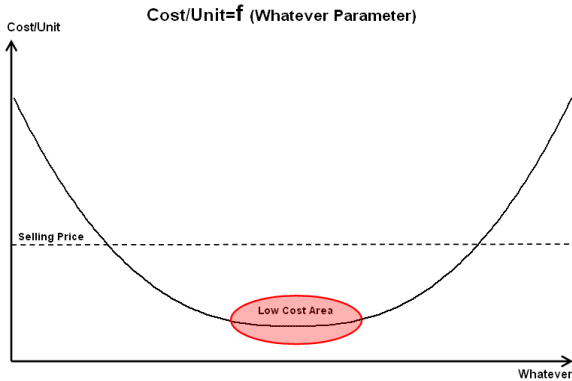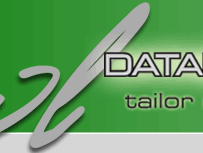1. Introduction
Very few organizations have the privilege to charge for their goods or services
whatever they want. For all others, their prices are more or less set by the
market (or by some forms of regulations). Every organization lives off the
difference between the selling price and the costs per unit. So if you can not
set your prices, you want to minimize your ‘Costs per Unit’.
If you deem the following as absolutely trivial, you are
correct. I nevertheless think it is worth mentioning because I have witnessed
too many cost cutting exercises with simplistic approaches like ‘slash overhead
costs’, ‘minimize your inventory’ (preferably to zero), etc. without considering
the consequences.
2. Costs per Unit
Organizations are more or less complex entities with
tens of parameters influencing each other. It is therefore not possible to
minimize your ‘Costs per Unit’ by minimizing the costs for each of these
parameters.
If one looks realistically at the relationship between the costs for a specific
parameter and the ‘Costs per Unit’, the resulting graph looks something like
this:

This graph is a two dimensional depiction of a reality with tens of interrelated
dimensions. As the environment you operate in changes, the graphs will change
too.
To maximize your earnings over
time, you want to operate your organization in the ‘Low Cost Area’. The graphs
are generally wide troughs. This means that if your organization operates in the
low cost area, small changes will not influence the ‘Costs per Unit’
dramatically.
3. Examples
To give a clearer picture of what this graph means, here are two examples.
3.1.
Wages
Everybody knows the old wisdom that
‘what you pay is what you get’. If your organization pays minimum wages you
normally get people with minimum skills (and often low ambitions). Depending on
how your organization is set up, this skill set can raise your ‘Costs per Unit’
considerably above the costs you can achieve with a higher paid workforce due to
lower productivity, higher quality costs (scrap, rework, etc.) and higher
turnover rates.
3.2. Engineering
If your organization involves
manufacturing, chances are you also have an engineering department. As a rule of
thumb, the better engineered your products, the more productive your plant.
Another of these rules also knows that the better you already are the more
costly improvements. To make matters worse, the optimal level of engineering for
your organization also depends, among many other parameters, from the skill set
of your workforce on the floor (see 3.1, Wages).
4. Conclusion
There are no mathematical formulas
that allow calculating the optimal point; you have to ‘find’ it. If you want to
operate your organization at the lowest ‘Costs per Unit’ the best approach is
probably:
-
Define the main parameters
influencing your ‘Costs per Unit’
-
Analyze each of them critically
and honestly, also considering the impact of other parameters (see 3,
Examples)
-
Decide on which side of the
optimal point you are currently operating
-
Start changing the parameters
in the right direction.
-
After the implementation period,
review the results and repeat the process on a regular basis.
Owl Database Application’s
Sensitivity Analyzer is an effective tool to support this process. It allows
you to easily run through ‘What-If’ scenarios that are based on your
reality.
Download the
printer friendly
version of this paper in pdf format |



